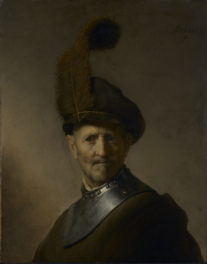
The Camera Obscura on Ocean Blvd. in Santa Monica. Photo: Jason Festa, CC BY-NC 2.0
The camera obscura (Latin for “dark room”) is an optical device that projects an upside-down image of what’s around it. A forerunner of the camera, it’s been used by artists from da Vinci to Vermeer to create paintings and drawings. Artworks made with the aid of a camera obscura often have a remarkably photographic vibe, like this light-drenched view of the Bay of Naples from the 1700s. In the Victorian era, the device was used as a seaside attraction—you can still see evidence of this at Santa Monica’s own camera obscura, open to the public since 1907.
Artist Abelardo Morell takes a unique approach to this device, as he makes entire rooms into camerae obscurae, then uses a long exposure to capture the image. This video explains the effects he achieves with this approach.
Ready to make your own? Here’s a step-by-step activity sheet with a template to help you make your own camera obscura in a cardboard box.
If you want to turn your whole room into a camera obscura, here’s an easy-to-follow tutorial that also describes how how snap a good picture of it.
As you can see, the supplies are simple—cardboard, a plastic ring or lens, a knife, and duct tape. The magic happens when light passes through the lens you’ve cut from one of the boards, following a long-known law of optics to project an upside-down version of the view onto the opposite wall.
Ambitious student Edwin Castro, one of the 8th-graders who participated in the Getty’s Community Photoworks program under the guidance of Morell, tried to make a room-size camera obscura himself, and told me this:
If you put the black plastic on the windows and turn off all the lights and just put one hole, the image outside will come inside, but flipped. I actually tried it—my mom came home and was staring at it, and I was like “Hi Mom!”
Whether or not you have parental permission, making your own camera obscura is a fun optical experiment!

Camera Obscura Image of Santa Maria della Salute in Palazzo Bedroom, Venice, Italy, 2006, Abelardo Morell. Inkjet print, 40 x 30 in. Lent by the artist, courtesy Edwynn Houk Gallery, New York. © Abelardo Morell, courtesy of Edwynn Houk Gallery, New York




Comments on this post are now closed.